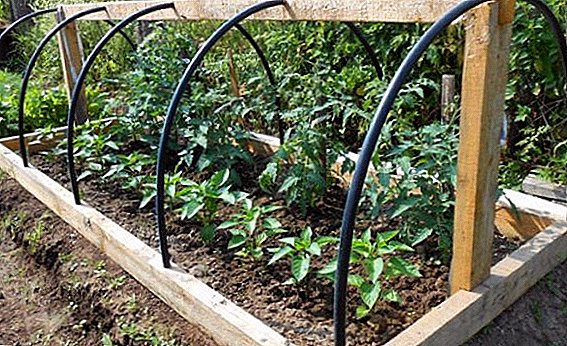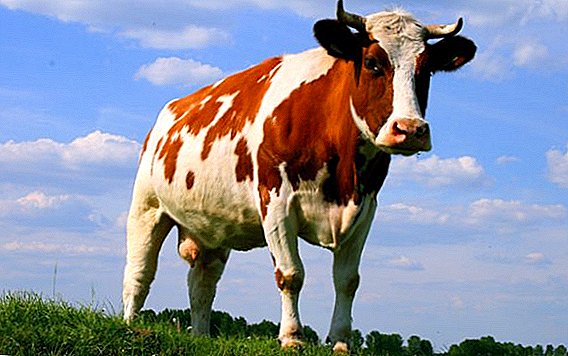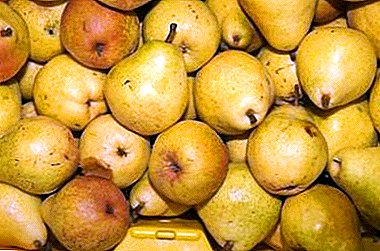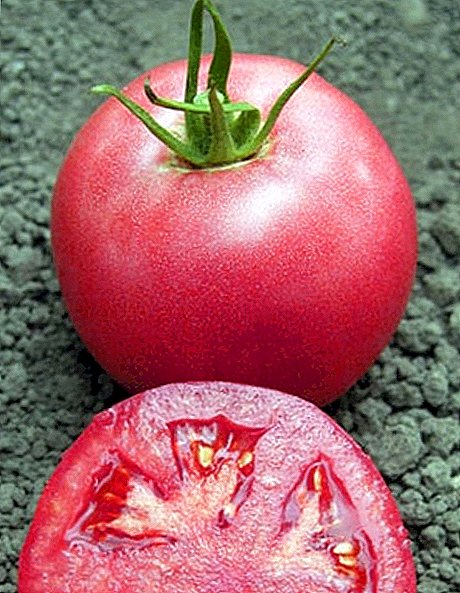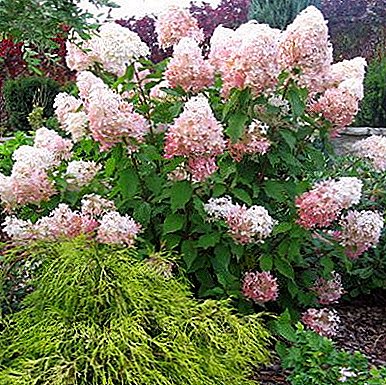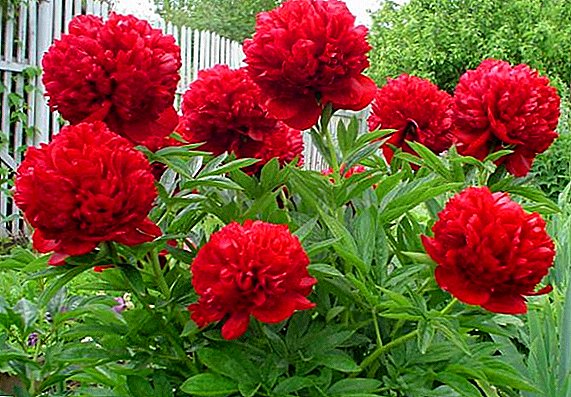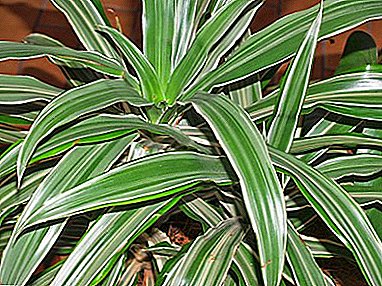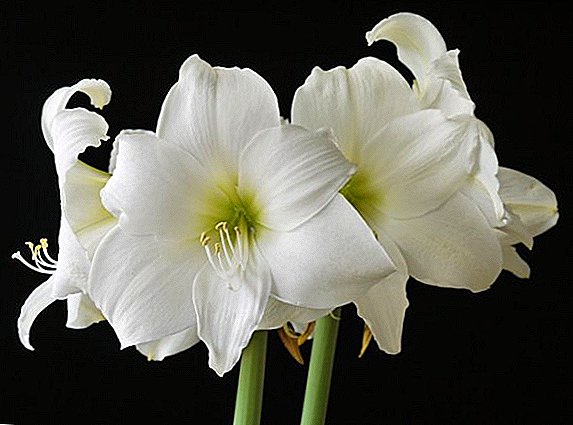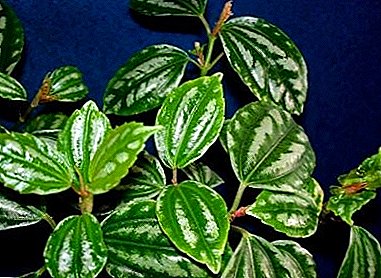 The saxifrage, the early flower, the bergenia, the Mongolian tea, the Chagir tea, the beran are all names for one plant. It reaches a height of 30-70 cm and prefers closed places from the wind; it can grow under a thick layer of snow. You can meet him in Siberia, China and Mongolia.
The saxifrage, the early flower, the bergenia, the Mongolian tea, the Chagir tea, the beran are all names for one plant. It reaches a height of 30-70 cm and prefers closed places from the wind; it can grow under a thick layer of snow. You can meet him in Siberia, China and Mongolia.
Bergenia plant is often used in traditional medicine, as its healing properties can cope with a number of symptoms of various diseases. The raw materials for medicines are all parts of the plant - rhizomes, flowers, seeds, leaves.
Did you know? Badan is named after the German botanist Carl August von Bergen. In Latin, the name sounds like Bergenia.
Beneficial properties of bergenia and its composition
Bergenia has healing properties, and its use for treatment is possible due to its beneficial composition. The plant has such properties:
- antibacterial;
- anti-inflammatory;
- hemostatic;
- knitting;
- tanning skin;
- diuretic;
- antihypertensives.

- tannins;
- gallic acid;
- glycoside bergenin;
- arbutin;
- dextrin;
- polyphenols;
- mineral substances: calcium, potassium, magnesium, copper, manganese, cobalt, aluminum, vanadium, barium, nickel, selenium, strontium, gum, tannins, resins, zinc, essential oils;
- ascorbic acid and vitamins.
The older the plant, the more tannins in the rhizome. They make flour, rhizomes can be fried, boiled, eaten.
How to prepare badan
To harvest badan you need to find a good time. Different parts of the plant have different optimal times for this..
 Bergenia leaf has popular healing properties. But these qualities have only old leaves that wintered under the snow.
Bergenia leaf has popular healing properties. But these qualities have only old leaves that wintered under the snow.
The optimal period for harvesting the leaves of an orchard is autumn and spring. Collected leaves are washed, dried and stored in a box or paper bag. The optimum temperature for drying leaves of bergenia is 60 degrees.
Badana roots taken to harvest in early summer. They need to dig, wash with cold water, dry and spread on fabric or paper. For drying, large Badana roots can be cut into smaller pieces.
1 kg of Badan root in dried form will give only 250 g of raw material. Signs of a properly dried root are that it does not bend, breaks well. On the break should be seen the middle of a light pink or yellow color.
Both leaves and roots of Bergenia can be stored no more than 4 years..
Did you know? In the past, whole villages harvested the roots and leaves of Bergenia, which were further used for tanning leather and dyeing matter.
Bergenia in traditional medicine
Badan thanks to its beneficial qualities is popular in traditional medicine. Its properties have a beneficial effect on the body in many diseases.
 Polyphenols and arbutin contained in the plant have high antioxidant activity. Arbutin also protects the body's cells from destruction.
Polyphenols and arbutin contained in the plant have high antioxidant activity. Arbutin also protects the body's cells from destruction.
Bergenin in the composition of Bergenia has a beneficial effect on the gastrointestinal tract and prevents the accumulation of fat in the body.
Badana tea possesses the styptic, knitting, antimicrobic action. He is able to moderately lower pressure, slightly reduce body temperature and slightly increases the heart rate.
The so-called Altai tea copes well with the removal of physical and moral fatigue, has a tonic effect on the body.
In case of intestinal disorders, rheumatism, arthrosis and arthritis, kidney disease, goiter treatment, tea from bergenia is also used.
Important! It is necessary to take into account all the effects of consumption of bergenia. Even if it is indicated that the effect is insignificant, for someone it can be quite strong.
 Badan has also external use. In the form of powder they sprinkle wounds and bleeding ulcers. For bruises, you can make a compress that will accelerate the resorption of the hematoma.
Badan has also external use. In the form of powder they sprinkle wounds and bleeding ulcers. For bruises, you can make a compress that will accelerate the resorption of the hematoma.
Also in folk medicine practiced the use of bergenia for neoplasms of different localization.
Broths and infusions are widely used. Broth is used to treat hemorrhoids. In this case, you must take a sedentary bath, the temperature of which should not exceed 38 degrees. Sit in the bathroom with decoction Badan can be up to 20 minutes, and the course is not more than 15 baths.
Badana decoctions applyr for gargling, make lotions and douching. Douching is used to treat colpitis, uterus erosion. Inside taken after meals three times a day for 2 tablespoons. Throat rinse with inflammatory diseases of the body. The decoction is also used to treat dysentery (possibly in combination with antibiotics).
Important! The use of bergenia for a long time can cause constipation. In the presence of constipation, reception of badana is not recommended.
Bergenia is used in such diseases as tuberculosis, pneumonia, dysentery, strong purulent bronchitis. It helps to cope with infectious diseases due to its powerful anti-bacterial properties.
Funds from bergenia can be taken to improve health and a surge of strength in old age, to strengthen the immune system, while weakening performance. Also used in cosmetology - for the skin of the face and head.
Badan Recipes
 There are many recipes for how to make banean in order to get the maximum benefit from consuming this plant. It is taken as an independent medicine, as well as in combination with other herbs. In some cases, combine drug treatment and receiving bergen.
There are many recipes for how to make banean in order to get the maximum benefit from consuming this plant. It is taken as an independent medicine, as well as in combination with other herbs. In some cases, combine drug treatment and receiving bergen.
Mongolian (Altai) tea. If you brew the dry leaves of the Badan plant, which were wintering under the snow, you get the so-called Mongolian tea. You need to take 2 tablespoons of crushed dried leaves and pour them with 1 liter of boiling water.
To brew tea from bergenia, it takes longer than brewing ordinary black tea. This is due to the thickness of the leaves - in the bergenia it is larger than that of the tea leaves. After 15-20 minutes of brewing, tea must be drained.
Badana powder and extract. Extraction of medicinal properties of the root of bergenia can be pereterev it into powder. This powder can be used in dry form, as well as used for the preparation of the extract.
 To do this, a few tablespoons of dried, shredded bergenia roots are poured with 1 cup of boiling water and the resulting mixture is boiled in a sealed container until half the liquid is evaporated. The extract is taken several times a day, 27 drops.
To do this, a few tablespoons of dried, shredded bergenia roots are poured with 1 cup of boiling water and the resulting mixture is boiled in a sealed container until half the liquid is evaporated. The extract is taken several times a day, 27 drops.
Infusion. For the preparation of infusion will need 20 g of leaves and flowers of bergenia. ANDx pour a glass of hot water and insist in a water bath for 15 minutes, then cool. Preparation of tincture takes about 45 minutes. You can take it several times a day for 2 tablespoons.
Decoction. For the broth will need 15 g of roots, which need to fill with hot water. The mixture is infused for half an hour in a water bath.
Who can not take Badan
Badan has contraindications for use, and they are as follows:
- tendency to thrombosis;
- increased blood clotting;
- chronic constipation;
- low pressure;
- tachycardia;
- allergy.



